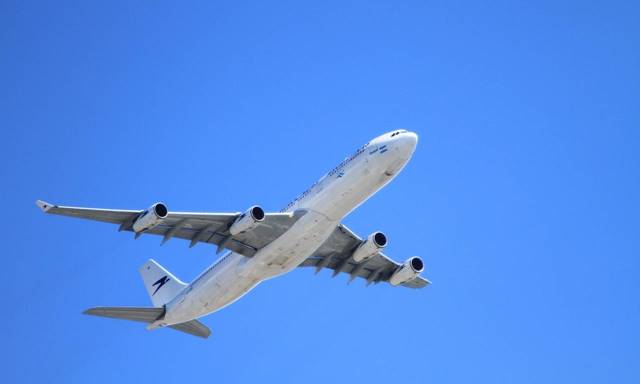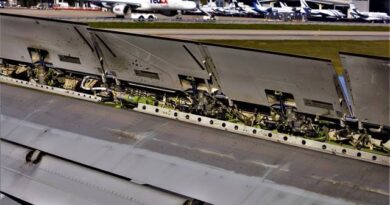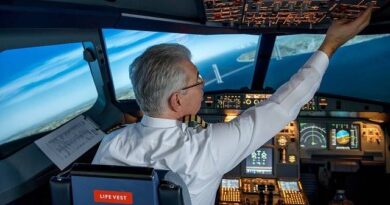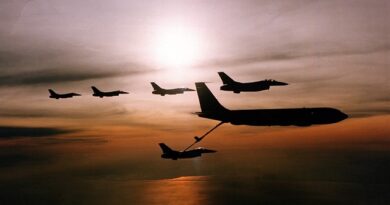Soaring Smoothly: Unveiling the En-Route Phase of Your Flight
Ever gaze out the window as your plane reaches cruising altitude and wonder, “What now?” That, my friend, is the en-route phase – the longest and most relaxed portion of your flight. Let’s dive deeper into its characteristics, dispelling any misconceptions along the way.
Reaching Optimal Altitude
Following departure procedures and climbing out of congested airspace, the aircraft accelerates to its cruising speed. Pilots meticulously choose the cruising altitude based on a trifecta of factors: weather conditions (avoiding turbulence), fuel efficiency (optimizing engine performance for the distance), and air traffic control (ATC) instructions (ensuring safe separation between aircraft). Contrary to popular belief, cruising altitude isn’t always the highest possible – it’s a calculated sweet spot.
Constant…ish Course and Speed
Imagine the plane settling into a comfortable rhythm. During most of the en-route phase, pilots maintain a constant target speed and course, making minor adjustments as needed. Wind currents can cause slight deviations, but the autopilot and pilot work together to stay on track. This stability is crucial for smooth flight and optimal fuel burn.
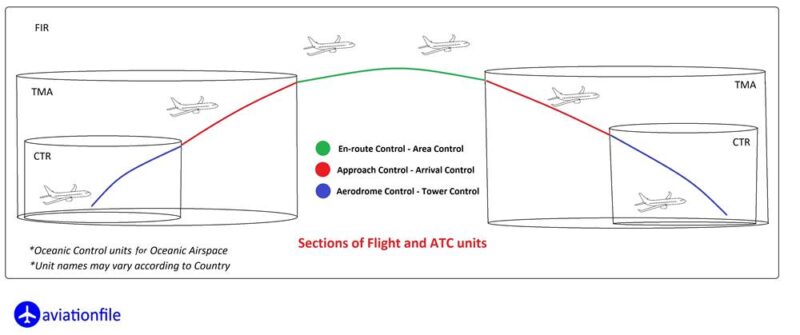
Monitoring & Communication Hub
While the cabin appears serene, the cockpit is a hub of focused activity. Pilots meticulously monitor instruments, keeping a watchful eye on engine performance, fuel levels, and navigation systems. Weather updates are constantly streamed in, and clear communication is maintained with ATC for guidance, traffic information, and potential reroutes due to unforeseen circumstances.
Passenger Relaxation Zone
The en-route phase is your time to unwind! Unlike takeoff and landing, the constant altitude minimizes turbulence, making for a smoother ride. Enjoy a book, catch up on a movie, or get some sleep. This is your time to de-stress and recharge before arrival.
The En-Route Pilot’s Toolkit
Several high-tech tools keep the pilots informed and in control. En-route charts, digital versions of paper maps, provide detailed navigational information like terrain, airspace restrictions, and navigational aids. Advanced avionics systems, the plane’s onboard computers, automatically handle many flight tasks, constantly monitoring and adjusting course and altitude to maintain efficiency and safety. Air traffic control, the unseen orchestra conductor of the skies, ensures safe separation between aircraft, guiding them along designated flight paths.
Variable Duration – A Matter of Distance
The en-route phase can vary significantly in length, ranging from a quick 20 minutes on a short regional hop to several hours on a transatlantic journey. The distance between your departure and arrival airports dictates the duration. So, regardless of the flight time, the en-route phase offers a chance to relax and appreciate the wonder of modern aviation.
References and Further Reading:
- “En Route Phase of Flight.” FAA Pilot’s Handbook of Aeronautical Knowledge. FAA, 2020.
- “En Route Phase of Flight.” Federal Aviation Regulations. FAA, 2020.
- “En Route Procedures.” Aviation Safety Network, 2020.
- Federal Aviation Administration (FAA): The FAA’s official website offers a wealth of information on various aspects of flight, including the en-route phase. Look for resources under “Pilot Training” or “Air Traffic Control.” https://www.faa.gov/
- Aircraft Owners and Pilots Association (AOPA): AOPA, a general aviation membership organization, provides educational resources for pilots and aviation enthusiasts. Their website might have articles or videos specifically on the en-route phase. https://www.aopa.org/
- SKYbrary: This online aviation reference library offers a concise yet informative explanation of en-route operations, including pilot responsibilities and ATC interaction. https://skybrary.aero/tutorials/en-route-flight-planning
- Pilot’s Handbook of Aeronautical Knowledge (PHAK): This FAA publication, available online or in physical form, serves as a comprehensive reference for pilots. Chapter 4 covers flight procedures, including details on the en-route phase. https://www.faa.gov/regulations_policies/handbooks_manuals/aviation/phak
